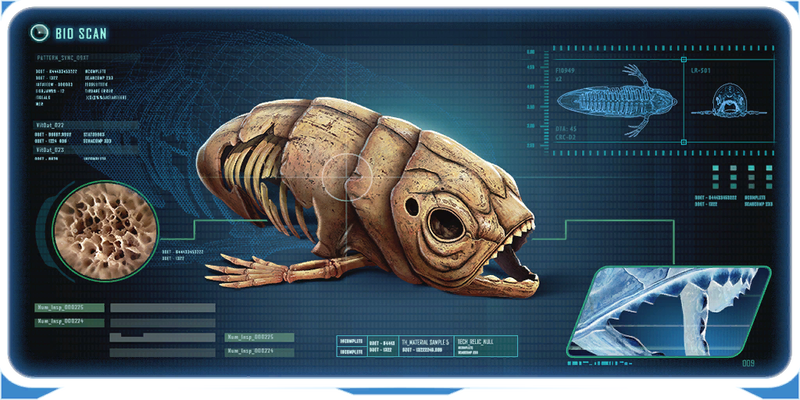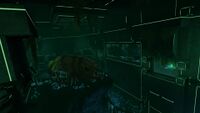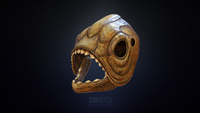Research Specimen: Difference between revisions
GemmaBeepo (talk | contribs) No edit summary |
(Updated Data Bank Entry) |
||
| Line 10: | Line 10: | ||
{{clear}} |
{{clear}} |
||
==Data Bank Entry== |
==Data Bank Entry== |
||
<tabber> |
|||
=Remains of Research Specimen |
|||
{| style="width: 100%;" class="article-table sortable" border="0" cellpadding="1" cellspacing="1" |
{| style="width: 100%;" class="article-table sortable" border="0" cellpadding="1" cellspacing="1" |
||
|- |
|- |
||
| Line 15: | Line 17: | ||
|- |
|- |
||
| style="text-align:left; font-size:12px;" | |
| style="text-align:left; font-size:12px;" | |
||
The skeletal remains of a vast predator, |
The skeletal remains of a vast predator, housed within an artificial habitat. |
||
# Habitat:<br />The environment constructed to house the specimen suggests it was kept alive in containment for research purposes for months, or even years. Organic matter indicates the habitat once supported extensive |
# Habitat:<br />The environment constructed to house the specimen suggests it was kept alive in containment for research purposes for months, or even years. Organic matter indicates the habitat once supported extensive plantlife, though it has since decayed. When the facility collapsed this specimen was either left to die, or killed on the spot.<br /> |
||
| ⚫ | # Evolution:<br />While it shares some skeletal traits with the biter and sandshark, including its distinctive double eye sockets, this fossilized specimen is significantly larger, and features unusual forearms rarely seen in aquatic species. This species has likely gone extinct in the past thousand years, and its evolutionary relatives have evolved almost beyond recognition. |
||
# Cause of Death:<br />Time of death coincides with the facility's abandonment. There is little physical damage to the skeleton, suggesting death from malnourishment or outside interference. |
|||
| ⚫ | |||
|} |
|} |
||
</tabber> |
|||
==Gallery== |
==Gallery== |
||
Revision as of 22:51, 6 January 2018
<infobox layout="stacked">
<title source="title" style="font-weight:bold; text-align:center;"> <default>Research Specimen</default> </title> <image source="image">
</image>
<label>Age</label>
<label>Status</label>
<label>Biome</label>
<label>Length</label>
<label>Coordinates</label>
<label>GoTo</label>
<label>Debug Spawn</label>
</infobox>
This large predator was kept in the main aquarium of the Disease Research Facility for a long period of time for testing purposes. The skeleton is very odd in appearance, having a solid exterior shell, as well as an interior skeleton. The PDA notes shared skeletal traits with the Biter, implying distant relation between the two species. It is assumed that this species died off around 1000 years ago due to Kharaa.
Data Bank Entry
<tabber> =Remains of Research Specimen
|
The skeletal remains of a vast predator, housed within an artificial habitat.
|
</tabber>




